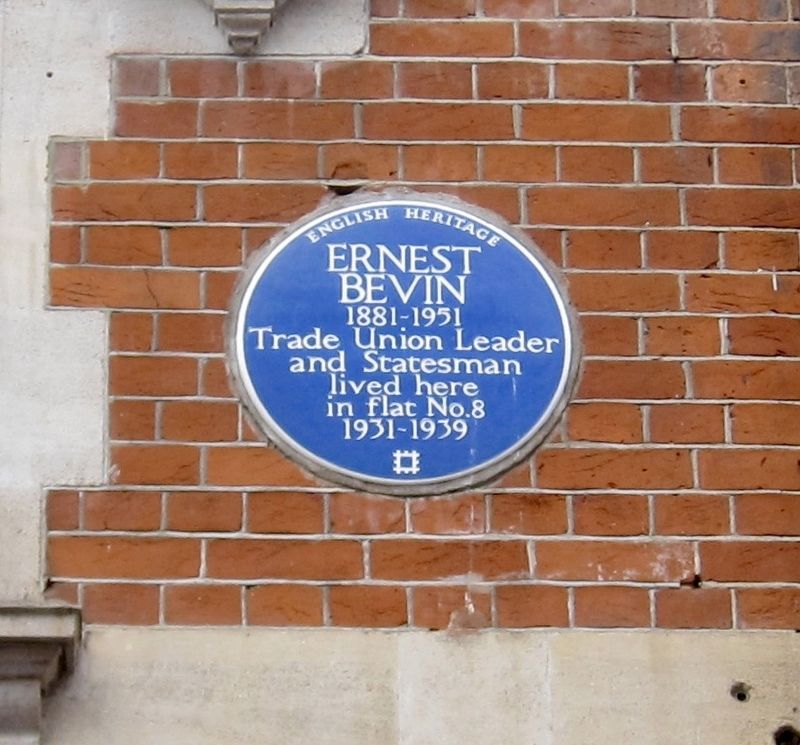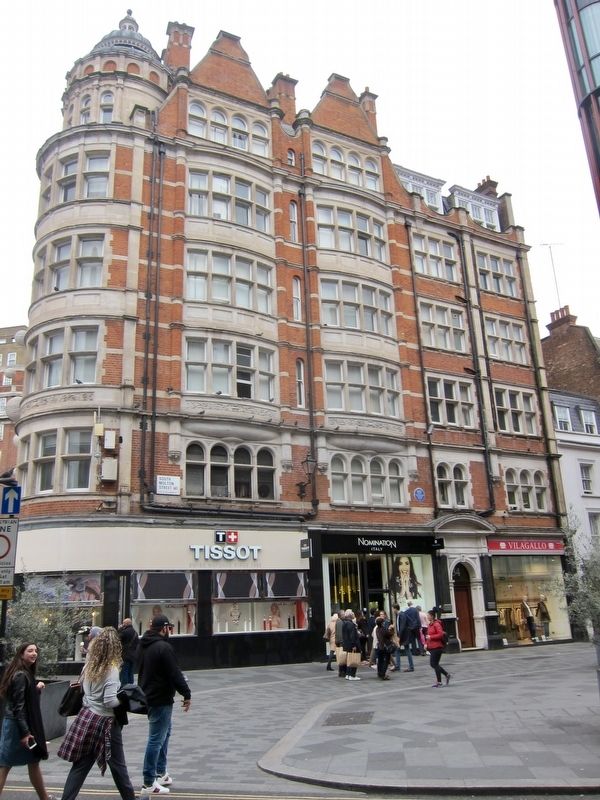City of Westminster in Greater London, England, United Kingdom — Northwestern Europe (the British Isles)
Ernest Bevin
1881-1951
and Statesman
lived here
in flat No. 8
1931-1939
Erected 2001 by English Heritage.
Topics. This historical marker is listed in these topic lists: Government & Politics • Labor Unions.
Location. 51° 30.849′ N, 0° 8.931′ W. Marker is in City of Westminster, England, in Greater London. Marker is at the intersection of South Moulton Street and Davies Street, on the right when traveling north on South Moulton Street. Touch for map. Marker is at or near this postal address: 34 South Moulton Street, City of Westminster, England W1Y 1HA, United Kingdom. Touch for directions.
Other nearby markers. At least 8 other markers are within walking distance of this marker. Colen Campbell (about 180 meters away, measured in a direct line); The Bee Gees (about 180 meters away); John Adams (about 210 meters away); George Frideric Handel (about 240 meters away); Jimi Hendrix (about 240 meters away); Sir Alexander Korda (approx. 0.3 kilometers away); Herbert Henry Asquith (approx. 0.3 kilometers away); Ann Oldfield (approx. 0.3 kilometers away). Touch for a list and map of all markers in City of Westminster.
Also see . . .
1. Ernest Bevin (Wikipedia). "Ernest Bevin (9 March 1881 – 14 April 1951) was a British statesman, trade union leader, and Labour politician. He co-founded and served as general secretary of the powerful Transport and General Workers' Union from 1922–40, and as Minister of Labour in the war-time coalition government. He succeeded in maximizing the British labour supply, for both the armed services and domestic industrial production, with a minimum of strikes and disruption. His most important role came as Foreign Secretary in the post-war Labour Government, 1945–51. He gained American financial support, strongly opposed Communism, and aided in the creation of NATO. Bevin's tenure also saw the end of the Mandate of Palestine and the creation of the State of Israel. His biographer, Alan Bullock, said that Bevin "stands as the last of the line of foreign secretaries in the tradition created by Castlereagh, Canning and Palmerston in the first half of the 19th century," and that due to the reduction in British power he has no successors." (Submitted on November 3, 2017.)
2. Ernest Bevin (Spartacus Educational). (Submitted on November 3, 2017.)
Credits. This page was last revised on January 27, 2022. It was originally submitted on November 3, 2017, by Andrew Ruppenstein of Lamorinda, California. This page has been viewed 294 times since then and 16 times this year. Photos: 1, 2. submitted on November 3, 2017, by Andrew Ruppenstein of Lamorinda, California.

